Maintaining a warm home without skyrocketing energy bills becomes a priority as winter approaches. One of the best solutions is upgrading to a smart thermostat. These devices offer advanced features that not only enhance comfort but also improve energy efficiency, making them a must-have for any modern home. Whether you’re looking for a Wi-Fi thermostat, a programmable thermostat, or a voice-controlled thermostat, this guide will help you find the right one for your needs this winter.
Best Smart Thermostats To Buy This Winter
1. Nest Learning Thermostat (3rd Generation)
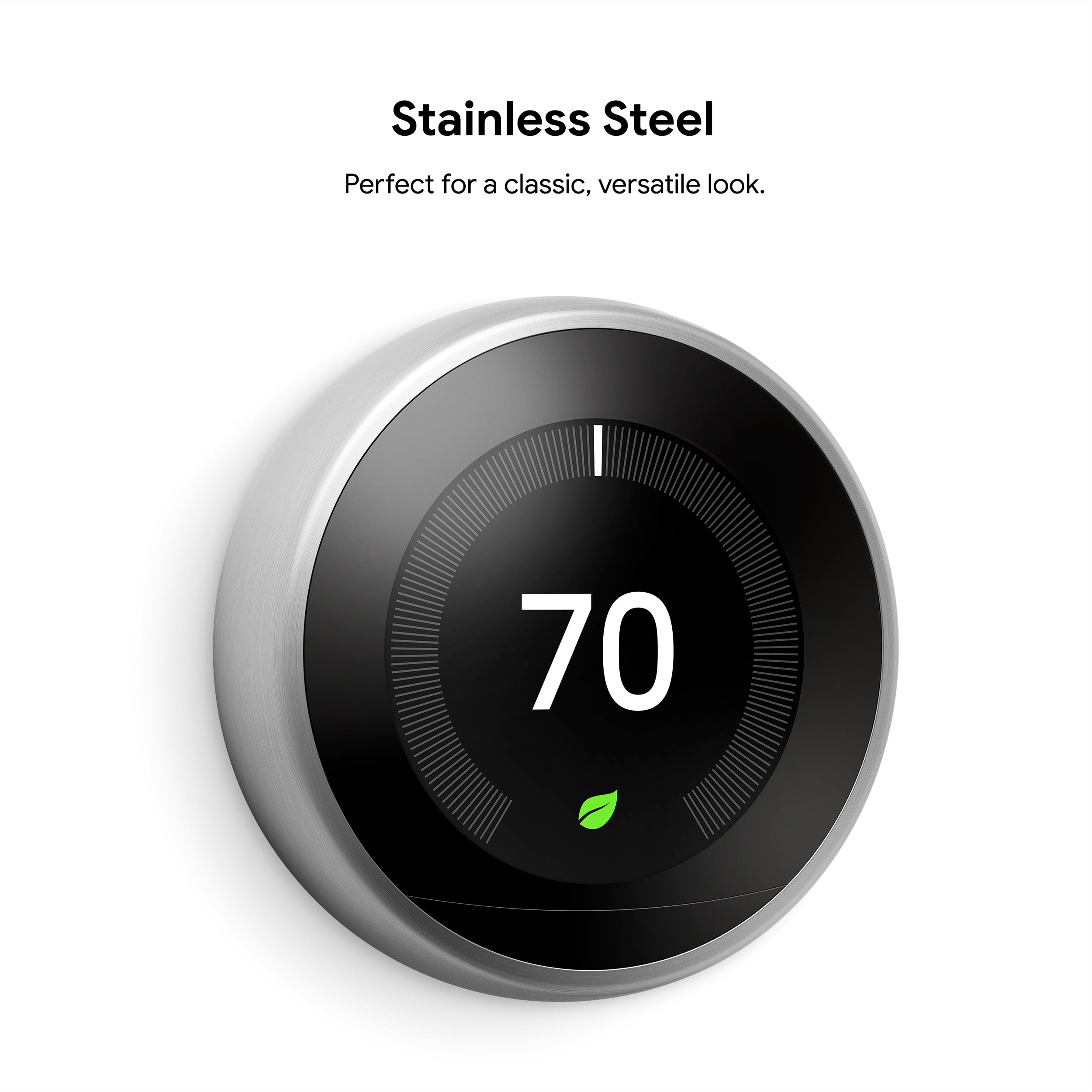
The Nest Learning Thermostat (3rd Generation) is one of the most widely used smart thermostat which comes with sleek look and feel, is very easy to program and can automatically “learn” users schedule with a view of optimizing heating and cooling. This goal here is to conserve energy while giving you comfort by having the ability to learn your daily schedule to control heating or cooling in your home.
Key Features:
- Auto-Schedule: The Nest Learning Thermostat learns your daily routines and programs itself accordingly. Over time, it creates a custom schedule to keep your home comfortable and energy-efficient.
- Energy Savings: The thermostat displays a green leaf icon when you choose an energy-saving temperature, helping you to monitor your energy consumption in real-time. It also offers reports on energy usage.
- Remote Control: You can control the thermostat from anywhere via the Nest app, which is available on both iOS and Android devices. This feature lets you adjust the temperature even when you’re not home.
- Farsight: The thermostat lights up when it detects motion, displaying useful information like the current temperature, weather, or time, making it easy to see from across the room.
- Compatibility: Works with most 24V heating and cooling systems, including gas, electric, and oil furnaces, as well as radiant, heat pump, and forced air systems.
- Smart Home Integration: It works with Google Assistant and Alexa, allowing you to control it through voice commands. It also integrates with other smart home devices for an automated, connected home experience.
- Nest Temperature Sensors: Optional remote temperature sensors can be added to ensure that specific rooms in your home are kept at the desired temperature.
- Home/Away Assist: Uses sensors and your phone’s location to detect when you leave the house and adjust the temperature to save energy.
- Easy Installation: The thermostat comes with step-by-step instructions and typically takes around 30 minutes to install, with no professional help required.
Pros:
- Energy Savings: The smart learning capabilities help reduce heating and cooling costs by optimizing energy use based on your habits.
- Sleek Design: The Nest Learning Thermostat has a modern, minimalist design with a high-resolution display, blending seamlessly with most home decors.
- Self-Learning Feature: It gradually learns your temperature preferences and creates a custom schedule, requiring less manual adjustment over time.
- User-Friendly App: The Nest app is easy to use, providing a clear interface to adjust settings, monitor energy usage, and control the thermostat remotely.
- Smart Home Compatibility: Integrates well with various smart home ecosystems, including Google Home and Amazon Alexa, for voice control and automation.
- Farsight Display: The large, easy-to-read display provides useful information like time, weather, or current temperature when you walk by.
Cons:
- High Price Point: The Nest Learning Thermostat is more expensive compared to some other smart thermostats, making it a significant investment.
- Limited Compatibility with Some HVAC Systems: While it works with most systems, there are still some setups, particularly older or more complex ones, where it may require a professional for installation or may not be compatible at all.
- Lacks External Sensors in Base Package: The temperature sensors for individual rooms are sold separately, adding to the overall cost.
- Learning Curve: While the thermostat is designed to learn your schedule, it may take a few weeks to fully adapt, which can initially lead to incorrect temperature settings.
- Dependent on Wi-Fi: Many of its smart features, like remote control and energy reports, rely on a strong Wi-Fi connection.
2. Emerson Sensi Touch Wi-Fi Smart Thermostat

With the Emerson Sensi Touch Wi-Fi Smart Thermostat, you can take advantage of the simplest but the most effective smart thermostat currently available in the market that has many features perfect for regulating home heating and cooling systems. Loaded with a touch screen, it comes with the features of remote control, intelligent notification and compatibility with popular smart home systems.
Key Features:
- HD Touchscreen Display: The large, responsive color touchscreen display makes it easy to adjust settings, view current temperature, and manage schedules. The screen lights up automatically when approached.
- Remote Control via App: You can control the Sensi Touch from anywhere using the Sensi mobile app, available on iOS and Android devices. It allows you to adjust the temperature, set schedules, and monitor energy usage remotely.
- Smart Home Integration: It works with Amazon Alexa, Google Assistant, Apple HomeKit, and Samsung SmartThings, allowing voice control and smart home automation.
- Geofencing: The thermostat uses your phone’s location to detect when you’re away, automatically adjusting the temperature to save energy and returning to comfort settings when you arrive home.
- Flexible Scheduling: The Sensi app allows you to create customized schedules, enabling different temperatures at various times of the day to match your lifestyle.
- Smart Alerts: It sends notifications for extreme temperature or humidity levels in your home, helping you to monitor the environment and protect your HVAC system.
- Energy Reports: Through the app, you can access detailed reports on your energy usage and get insights on how to optimize your heating and cooling.
- DIY Installation: The thermostat is designed for easy DIY installation with step-by-step instructions in the app. It works with most common HVAC systems, though it requires a C-wire (common wire) for power.
- Humidity Control: In addition to temperature, the Sensi Touch offers humidity control for homes equipped with humidifiers or dehumidifiers.
- Smart Alerts: Notifies you about heating and cooling performance or issues, such as when your system needs maintenance or is running inefficiently.
Pros:
- Affordable Price: Compared to other smart thermostats with similar features, the Emerson Sensi Touch is reasonably priced, making it an attractive option for budget-conscious homeowners.
- Ease of Use: The intuitive app and touchscreen interface make it simple to set up, adjust settings, and monitor your home’s environment.
- Smart Home Integration: It offers broad compatibility with smart home ecosystems, making it ideal for homes already using Alexa, Google Assistant, or Apple HomeKit.
- Geofencing Feature: Automatically adjusts temperatures based on your location, which can save energy when you’re away and make your home comfortable when you return.
- DIY-Friendly Installation: With clear instructions and wide compatibility with HVAC systems, most users can install the thermostat without needing professional help.
- Smart Alerts: Helps you maintain an optimal environment by alerting you to potential problems, such as extreme temperatures or humidity levels.
Cons:
- Requires C-Wire: Unlike some thermostats that offer options without a C-wire, the Sensi Touch requires one, which might be a hassle for homes without the necessary wiring.
- No Learning Feature: Unlike the Nest Learning Thermostat, the Sensi Touch does not learn your schedule over time. You must manually set up and adjust your schedules.
- Basic Energy Reports: While it does offer energy usage reports, they are not as detailed or customizable as those provided by other high-end smart thermostats.
- No Motion Sensors: Unlike some competitors, the Sensi Touch lacks motion sensors to detect when rooms are occupied, limiting its ability to adjust settings based on real-time usage.
- Limited Design Customization: The thermostat is available in a single black color option, which may not match all home interiors as well as more customizable models.
3. Mysa Smart Thermostat for Electric Baseboard Heaters
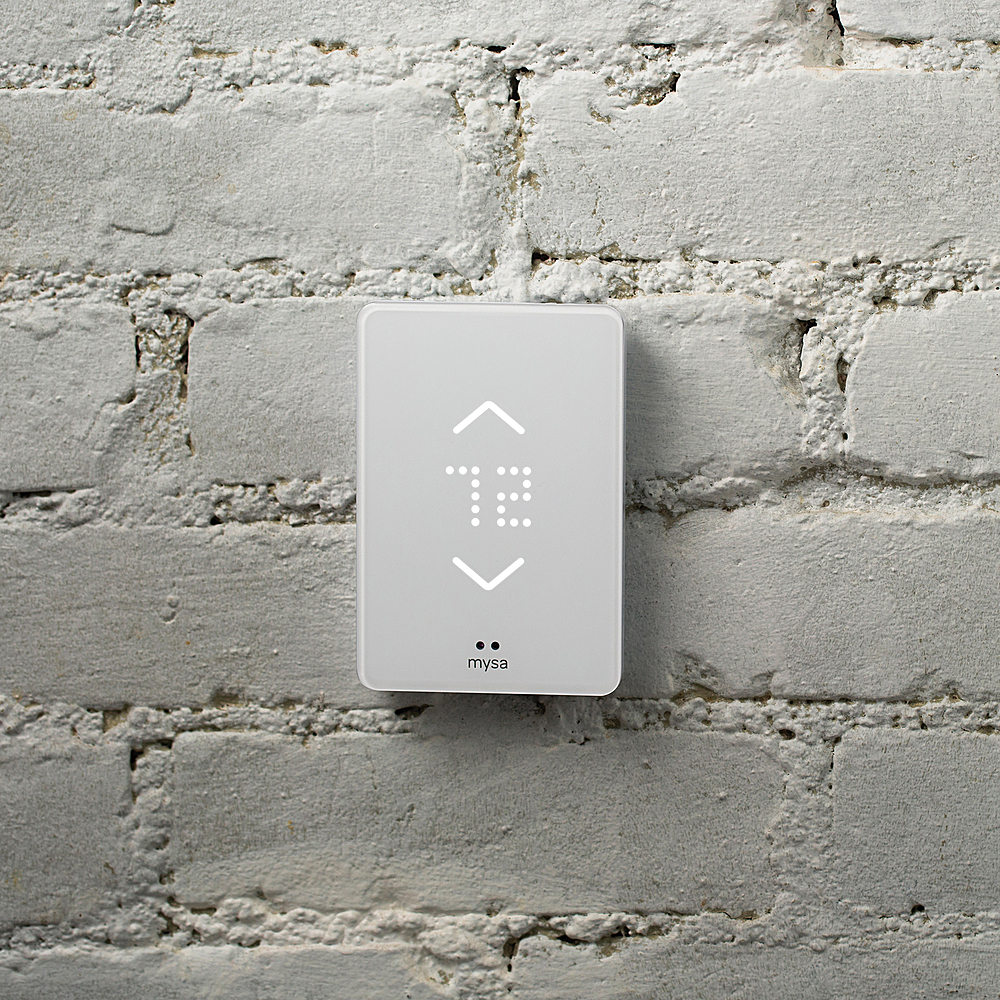
The Mysa Smart Thermostat is a Smart Thermostat intended for electric baseboard heaters, fan-forced heaters and generally high voltage electric heating systems. It is an energy-efficient control; It has a minimalist look and feel and also has remote control, programmable timers and smart home compatibility. Mysa is arguably one of the few smart thermostats designed to work with high-voltage heating systems, thus it is ideal for homes with electric baseboard heaters.
Key Features:
- Compatibility with High-Voltage Heaters: Mysa is designed specifically for electric baseboard heaters, fan-forced heaters, and other 120-240V systems. It’s a rare solution for homes that rely on these types of heating systems.
- Wi-Fi Connectivity & Remote Control: The thermostat connects to Wi-Fi, allowing you to control it from anywhere using the Mysa app. You can adjust temperatures, set schedules, and manage multiple zones from your smartphone.
- Smart Home Integration: Mysa is compatible with popular smart home platforms, including Apple HomeKit, Amazon Alexa, Google Assistant, and Samsung SmartThings, enabling voice control and home automation.
- Energy Saving & Reports: Mysa provides detailed energy usage reports through the app, helping you track and optimize energy consumption. The thermostat also recommends energy-efficient settings.
- Geofencing: The geofencing feature detects when you leave or arrive home and automatically adjusts the temperature to save energy while maintaining comfort.
- Zoning Capability: You can control multiple Mysa thermostats in different rooms (zones) of your home, creating individual schedules for each area based on usage and preferences.
- Scheduling: Through the Mysa app, you can create custom schedules for each day of the week, helping to save energy during times when heating is not required.
- Minimalist Design: Mysa features a sleek, modern design with a simple LED display, blending seamlessly with various home decor styles.
- Child Lock: A child lock feature prevents unwanted changes to temperature settings, ideal for homes with children.
- Easy Installation: Mysa provides step-by-step instructions for DIY installation, though it may require a bit of electrical know-how since it’s dealing with high-voltage systems.
Pros:
- Tailored for Electric Baseboards: One of the few smart thermostats designed specifically for high-voltage heating systems, making it an essential choice for homes with electric baseboard heaters.
- Energy Savings: Mysa’s energy usage reports, scheduling, and geofencing help reduce electricity consumption and lower heating costs.
- App Control & Remote Access: The Mysa app provides a user-friendly interface to control your home’s heating remotely, set schedules, and manage multiple zones, giving you full control over your heating from anywhere.
- Smart Home Compatibility: Works with major smart home platforms, allowing for integration into existing smart home ecosystems and enabling voice control.
- Zoning & Multi-Room Control: Mysa makes it easy to control different zones of your home independently, optimizing heating for each area based on its specific usage.
- Sleek Design: The minimalist design and clean white finish look modern and stylish, which can complement most interior decors.
Cons:
- High Price for Multiple Units: If you have multiple zones or rooms that require separate thermostats, the cost of purchasing several Mysa units can add up quickly.
- Requires Wi-Fi for Full Functionality: Many of the smart features, like remote control and energy reports, rely on a stable Wi-Fi connection, meaning Mysa may be less effective in homes with poor or inconsistent Wi-Fi coverage.
- No HVAC Support: Mysa is specifically designed for electric baseboard heaters and other high-voltage heating systems. It does not work with central HVAC systems, furnaces, or heat pumps, limiting its versatility.
- Installation Complexity: While installation is DIY-friendly, it involves dealing with high-voltage wiring, which may be intimidating for some users and might require a professional if you’re not comfortable working with electrical systems.
- Limited Cooling Control: Mysa is focused primarily on heating and does not support air conditioning or cooling systems, so it’s not a comprehensive solution for homes that require both heating and cooling automation.
4. Google Nest Thermostat
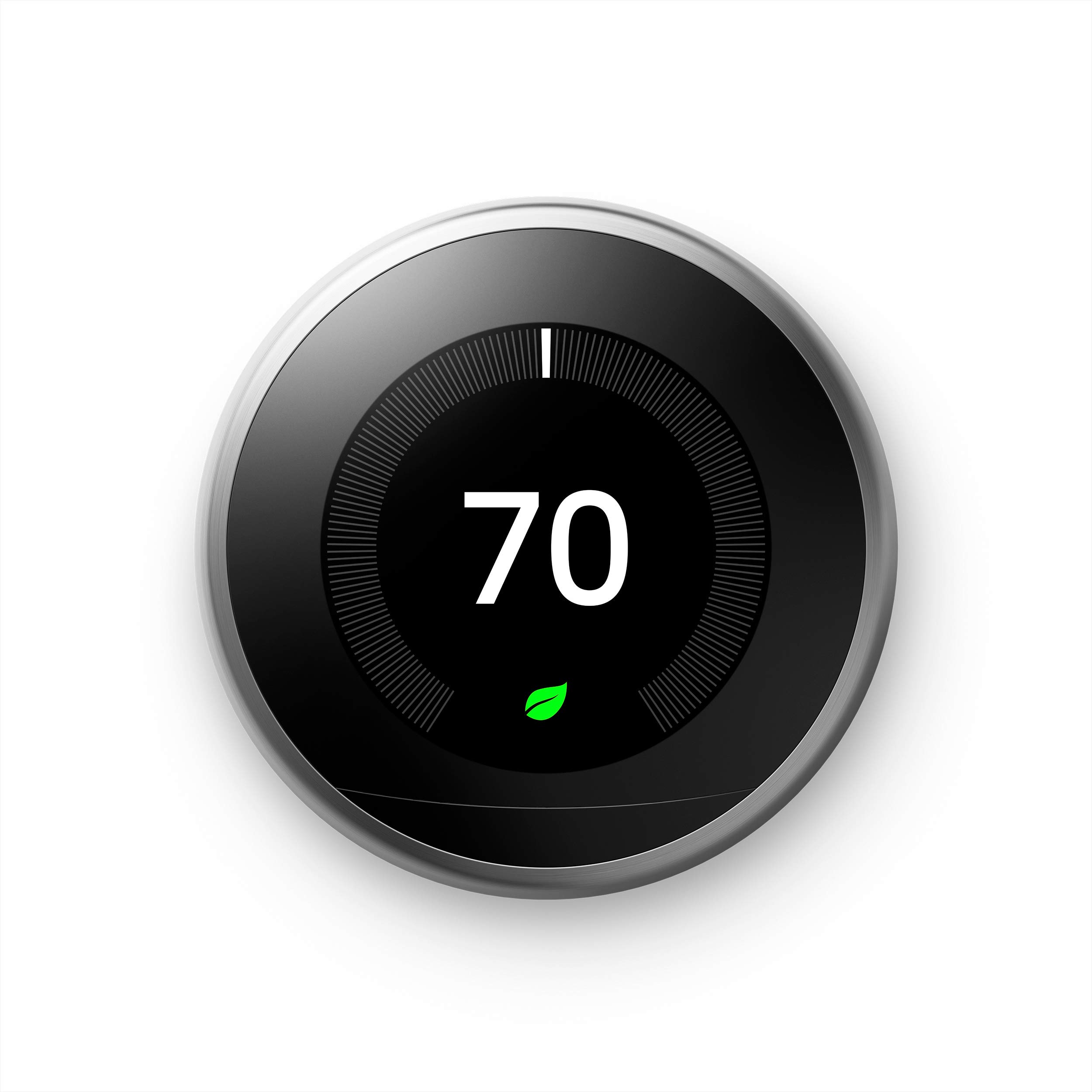
The Google Nest Thermostat is a contemporary affordable smart thermostat that aims to provide basic smart experience with elegant design. It’s quite good at controlling the climate while also fitting nicely into the Google environment most people are already using for home automation and energy saving purposes.
Key Features:
- Sleek Design: The Google Nest Thermostat features a minimalist design with a high-resolution, color display. It is available in several colors to match various home decor styles.
- Voice Control & Smart Home Integration: It integrates with Google Assistant and is compatible with Amazon Alexa, allowing for voice control and automation within your smart home system.
- Energy Saving: The thermostat helps you save energy with features like energy usage reports and a learning capability that optimizes temperature settings based on your habits.
- Quick Schedule Setup: Unlike some other smart thermostats, the Google Nest Thermostat does not have a self-learning schedule. However, it allows for a straightforward manual setup of a schedule through its app.
- Remote Control: You can control the thermostat from anywhere using the Google Home app on iOS and Android devices. This lets you adjust settings, monitor energy usage, and manage temperature remotely.
- Farsight: When you approach the thermostat, the Farsight feature lights up the display, showing the time, current temperature, or weather, making it easy to view from across the room.
- Energy History: The thermostat provides insights into your energy usage over time, helping you understand your consumption patterns and make adjustments to save on heating and cooling costs.
- Eco Mode: When it detects that no one is home, the thermostat automatically switches to Eco Mode, adjusting the temperature to save energy while you’re away.
- Easy Installation: The Google Nest Thermostat is designed for simple DIY installation and is compatible with most 24V heating and cooling systems.
- Color Options: It comes in a variety of colors to suit different home aesthetics, adding a touch of personalization.
Pros:
- Affordable Price: The Google Nest Thermostat is generally more budget-friendly compared to other smart thermostats with advanced features, making it an accessible option for those seeking smart home capabilities.
- Sleek and Modern Design: Its slim profile and variety of color options help it blend well with most home interiors.
- Smart Home Integration: Works seamlessly with Google Assistant and Alexa, providing convenient voice control and integration with other smart home devices.
- Energy Efficiency: Helps save on energy bills with features like Eco Mode, energy usage reports, and a clear interface for managing schedules.
- User-Friendly App: The Google Home app is straightforward and easy to use, allowing for remote control and management of the thermostat’s settings and schedule.
- Easy Installation: The thermostat is designed for DIY installation with clear instructions, reducing the need for professional help.
Cons:
- No Learning Feature: Unlike other Nest models, the Google Nest Thermostat does not have a learning capability. You need to manually set up schedules, which might not be as convenient as models that learn your preferences over time.
- Limited Advanced Features: It lacks some advanced features found in higher-end models, such as multi-zone control, detailed energy reports, and additional smart home integrations.
- Requires Wi-Fi: Many of its smart features rely on a stable Wi-Fi connection, which can be problematic if your home has inconsistent internet service.
- Limited Compatibility: While it works with most 24V systems, it may not be compatible with certain types of heating and cooling systems, such as those that require a C-wire or more complex HVAC setups.
- No Built-In Temperature Sensors: The thermostat does not come with additional temperature sensors, which could be a drawback if you need to manage temperatures in multiple rooms.
5. Tado° Smart Thermostat V3+
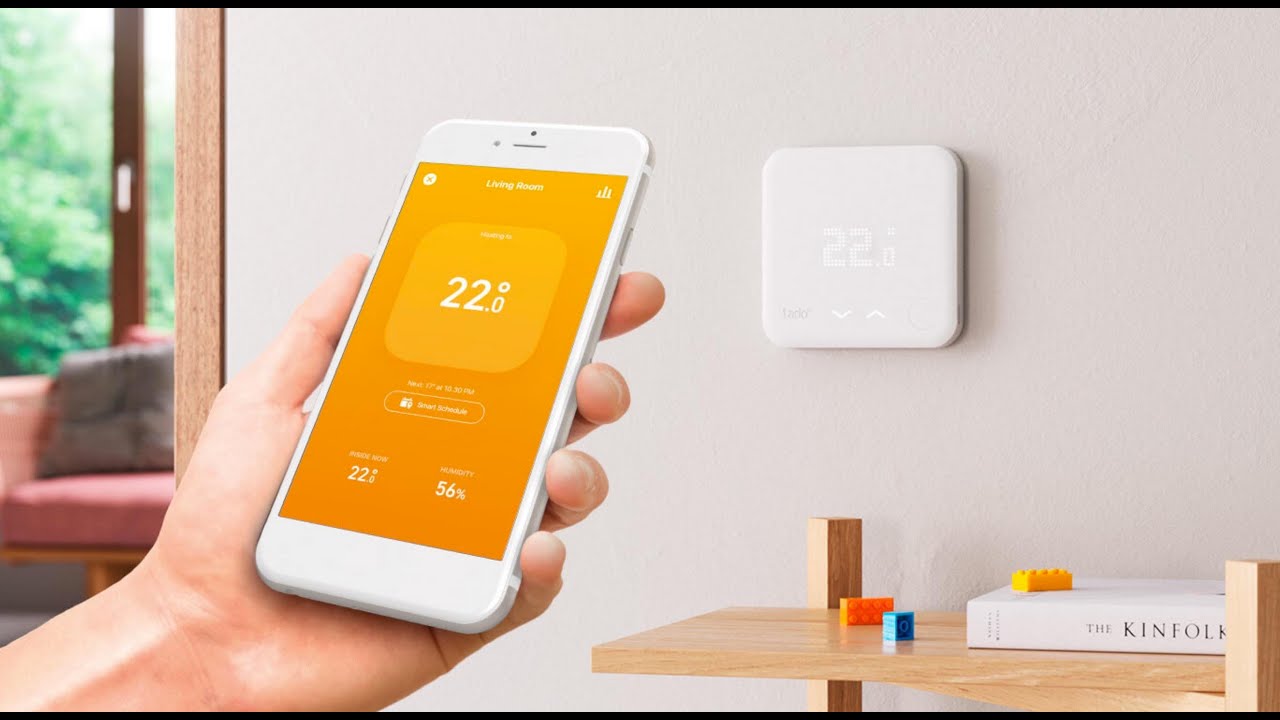
The Tado° Smart Thermostat V3+ is a smart thermostat of high level, which will help to improve home comfort and energy consumption. In terms of controls, it has progressive components coupled with robust control schemes that fit well in today’s smart homes. Tado°’s goal is to accurately maintain the desired temperature as well as implement smart scheduling and present information about energy utilization.
Key Features:
- Smart Scheduling: The Tado° Smart Thermostat V3+ allows for detailed scheduling through its app, enabling users to set different temperatures for various times of the day and days of the week.
- Geofencing: This feature uses your phone’s location to detect when you’re away or coming home. It adjusts the temperature accordingly to save energy while ensuring comfort when you return.
- Weather Adaptation: Tado° integrates local weather forecasts into its scheduling algorithms. This helps optimize heating and cooling based on current and forecasted weather conditions.
- Remote Control: The thermostat can be controlled via the Tado° app on iOS and Android devices, allowing you to adjust settings, manage schedules, and monitor your energy usage from anywhere.
- Smart Home Integration: It works with major smart home platforms, including Amazon Alexa, Google Assistant, and Apple HomeKit, enabling voice control and integration with other smart home devices.
- Multi-Room Control: The system supports multi-room management with additional Tado° Smart Radiator Thermostats, allowing for individual room temperature control and enhanced comfort.
- Energy Savings Reports: Tado° provides detailed energy usage reports and tips on how to reduce consumption, helping you track and optimize your heating and cooling efficiency.
- Easy Installation: The thermostat is designed for DIY installation with a straightforward setup process. It is compatible with most common heating systems, including boilers and underfloor heating.
- Open Window Detection: The thermostat detects sudden temperature drops, which may indicate an open window, and can automatically adjust the heating to prevent energy waste.
- Integration with Smart Radiator Thermostats: You can expand the system with Tado° Smart Radiator Thermostats to create a comprehensive smart heating system with room-by-room control.
Pros:
- Energy Efficiency: The combination of smart scheduling, geofencing, weather adaptation, and energy reports helps users significantly reduce their energy consumption and heating costs.
- User-Friendly App: The Tado° app is intuitive and easy to use, offering detailed control over your thermostat settings, scheduling, and energy reports.
- Smart Home Compatibility: Integrates seamlessly with popular smart home platforms, providing voice control and integration with other smart devices.
- Multi-Room Control: The option to add Tado° Smart Radiator Thermostats allows for precise control over individual rooms, enhancing overall comfort and energy efficiency.
- Easy Installation: Designed for DIY installation, the thermostat is compatible with a wide range of heating systems and comes with clear setup instructions.
- Open Window Detection: Helps prevent unnecessary heating when windows are open, contributing to energy savings.
Cons:
- Higher Initial Cost: The Tado° Smart Thermostat V3+ can be more expensive compared to other smart thermostats, especially when adding additional smart radiator thermostats for multi-room control.
- Subscription for Advanced Features: Some advanced features, like remote access and detailed energy usage insights, may require a subscription to Tado°’s additional services, potentially increasing long-term costs.
- Limited Cooling Control: The thermostat is primarily designed for heating systems. While it can be used in some cooling systems, it may not be as versatile or effective in managing air conditioning compared to dedicated cooling solutions.
- Geofencing Accuracy: The effectiveness of the geofencing feature depends on the accuracy of your phone’s location services, which may occasionally result in less reliable performance.
- Compatibility with Certain Systems: While it supports many common heating systems, it may not be compatible with all types, such as those with complex or non-standard setups.
6. Wyze Thermostat
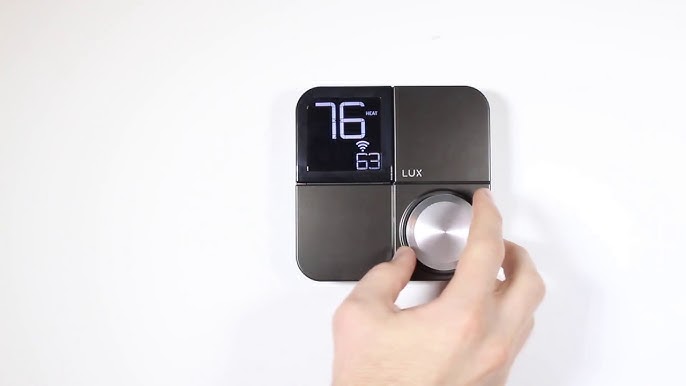
For a user looking for a basic smart thermostat that comes in at a very reasonable price, the Wyze Thermostat is worth considering. It offers decent value features that include Wi-Fi, app support, voice control, and simple programming functions. It may not have all the benefits and settings of higher-end units but is a perfect solution for those willing to integrate smart features into their heater/cooler for an affordable price.
Key Features:
- Affordable Pricing: The Wyze Thermostat is priced competitively, making it an attractive option for those looking for smart thermostat features without a high cost.
- Wi-Fi Connectivity & App Control: It connects to Wi-Fi, allowing you to control your thermostat remotely via the Wyze app, available on iOS and Android devices. This enables you to adjust settings, set schedules, and monitor your energy usage from anywhere.
- Voice Control: The Wyze Thermostat integrates with Amazon Alexa and Google Assistant, enabling voice commands for temperature adjustments and other settings.
- Simple Scheduling: You can create customized schedules through the Wyze app, setting different temperatures for various times of the day and days of the week.
- Energy Reports: The thermostat provides basic energy usage reports, helping you track your energy consumption and make adjustments to save on heating and cooling costs.
- DIY Installation: Designed for easy DIY installation, the Wyze Thermostat comes with straightforward instructions and is compatible with most 24V heating and cooling systems.
- Compact Design: The thermostat features a compact and minimalist design, which can blend seamlessly with various home interiors.
- Geofencing: The Wyze Thermostat includes a geofencing feature that uses your phone’s location to adjust the temperature based on whether you’re at home or away, optimizing energy use.
- Easy-to-Read Display: The thermostat has a clear, easy-to-read display that shows the current temperature and other relevant information.
- Smart Home Integration: In addition to voice control, the Wyze Thermostat can integrate with other Wyze smart home products for a more cohesive smart home experience.
Pros:
- Cost-Effective: The Wyze Thermostat offers smart features at a lower price point compared to many other smart thermostats, providing good value for the money.
- User-Friendly App: The Wyze app is intuitive and easy to use, allowing for straightforward control of the thermostat’s settings and scheduling.
- Voice Control: Integration with Amazon Alexa and Google Assistant provides convenient voice control options.
- DIY Installation: The thermostat is designed for easy installation with clear instructions, making it accessible for DIY enthusiasts.
- Geofencing: Helps optimize energy use by adjusting the temperature based on your location, contributing to potential savings.
- Compact and Modern Design: The sleek and minimalist design fits well with various home aesthetics.
Cons:
- Limited Advanced Features: Compared to more expensive smart thermostats, the Wyze Thermostat lacks some advanced features such as adaptive scheduling, detailed energy reports, and sophisticated smart home integrations.
- No Learning Capability: Unlike some higher-end models, the Wyze Thermostat does not have learning algorithms to adjust settings based on your behavior and preferences automatically.
- Basic Display: The display, while functional, is relatively simple and lacks some of the more advanced features seen in other smart thermostats, such as large color screens or additional customization options.
- Limited Compatibility: While it works with most 24V systems, it may not be compatible with more complex heating and cooling setups or systems that require a C-wire.
- Geofencing Accuracy: The effectiveness of the geofencing feature depends on the accuracy of your phone’s location services, which may occasionally lead to less reliable performance.
Smart Thermostats vs Regular Thermostats
- Remote Control vs Manual Operation
- Smart Thermostat: Can be controlled remotely via a smartphone, tablet, or voice commands using virtual assistants like Alexa or Google Home. Whether you’re at work, on vacation, or just in another room, you can easily adjust the temperature.
- Regular Thermostat: Requires manual adjustment at the device itself. A programmable thermostat can automate temperature changes, but it lacks remote control options.
- Energy Efficiency
- Smart Thermostat: Known for being an energy-saving thermostat, a smart device can learn your daily routine, adjust the temperature based on your presence, and optimize energy use. Many models also offer energy usage reports, helping you track and reduce your energy consumption.
- Regular Thermostat: While a programmable thermostat can help reduce energy use by automating temperature adjustments, it doesn’t adapt or offer insights into energy consumption. A standard manual thermostat provides no energy-saving features.
- Learning Capabilities
- Smart Thermostat: Over time, a smart thermostat “learns” your schedule and preferences, automatically adjusting the temperature based on when you’re home, away, or asleep. This smart temperature control feature makes heating and cooling more efficient and convenient.
- Regular Thermostat: Does not have any learning capabilities. You’ll need to manually adjust the temperature or rely on preset schedules in a programmable thermostat.
- Voice Control and Smart Home Integration
- Smart Thermostat: Many smart thermostats are voice-controlled and integrate seamlessly with other smart home devices. A smart thermostat compatible with Alexa, Google Home, or Apple HomeKit allows you to adjust your home’s climate hands-free.
- Regular Thermostat: Lacks voice control and integration with smart home systems. Adjustments must be made manually or through preset programming.
- Energy Tracking and Reports
- Smart Thermostat: Provides detailed insights into your energy usage, often breaking down data by day, week, or month. This allows you to identify patterns and make adjustments to further reduce energy costs.
- Regular Thermostat: Offers no reporting or insights into energy usage.
- Price
- Smart Thermostat: Typically more expensive upfront but can lead to long-term savings on energy bills, often paying for itself over time. The investment also includes the convenience of remote control and automated energy management.
- Regular Thermostat: Cheaper upfront but lacks the energy-saving features and convenience of smart thermostats, potentially leading to higher energy costs over time.
Benefits of Using a Smart Thermostat in Winter
A smart thermostat does more than just regulate your home’s temperature—it learns your habits and adjusts settings to optimize heating efficiency. Key benefits include:
- Energy savings: A smart temperature control system can reduce energy consumption by adjusting the temperature when you’re not home or asleep.
- Convenience: Features like remote control thermostat access via an app allow you to manage your home’s climate from anywhere, ensuring warmth when you return from the cold.
- Cost savings: Over time, an energy-saving thermostat pays for itself through reduced heating bills, especially in the winter.
Thermostats to Consider
- Wi-Fi Thermostat
- A Wi-Fi thermostat connects to your home’s wireless network, allowing you to control it remotely via smartphone apps. This feature is especially useful in winter when you want to warm up your home before arriving.
- Programmable Thermostat
- A programmable thermostat allows you to set specific temperature schedules for different times of the day. This is ideal for optimizing energy use while you’re away or asleep, providing warmth when needed and saving energy otherwise.
- Voice-Controlled Thermostat
- Many smart thermostats integrate with voice assistants like Alexa or Google Home, offering hands-free control. A voice-controlled thermostat lets you adjust the temperature without leaving your cozy spot on the couch.
- Wireless Thermostat
- A wireless thermostat gives you the flexibility to place it anywhere in the home, making it easier to achieve balanced heating throughout.
- HVAC Smart Thermostat
- An HVAC smart thermostat works in harmony with your heating, ventilation, and air conditioning system to optimize performance, ensuring that your home stays comfortable without wasting energy.
Best Smart Thermostat for Energy Efficiency in Winter
When it comes to winter, energy efficiency is key. The best smart thermostat for energy efficiency learns your habits and adapts to minimize energy consumption. Look for models with advanced smart home thermostat integration that not only work with your HVAC system but also provide detailed insights on your energy usage.
Smart Home Integration
A great feature of modern smart thermostats is smart home thermostat integration. Many models are compatible with Alexa, Google Home, and Apple HomeKit, allowing you to control your thermostat through voice commands or app-based automation. For example, a smart thermostat that works with Google Home can adjust your heating based on your routine or even the weather forecast.
Specialized Smart Thermostats for Winter
Depending on your home’s heating system, you may need a specific type of smart thermostat. Here are a few options:
- Smart Thermostats for Electric Baseboard Heaters: Some thermostats are designed to work with electric baseboard heaters, providing the same level of control and efficiency as traditional systems.
- Smart Thermostat for Controlling Multiple Zones: If your home has multiple heating zones, a smart thermostat can manage them independently, ensuring each area is at the right temperature.
- Smart Thermostat for Radiant Floor Heating: For homes with radiant floor heating, a smart thermostat can ensure your floors stay warm without wasting energy.
Affordable Smart Thermostat Options
There are several affordable smart thermostat models available that don’t compromise on features. Look for options that provide app control and voice commands without a hefty price tag. These models are perfect for those new to home automation or looking for a budget-friendly option.
Conclusion
Whether you need a smart thermostat for large homes, one compatible with electric baseboard heaters, or something affordable for home automation, there’s a perfect model for you. With features like remote control, voice activation, and programmable schedules, smart thermostats help you stay warm while minimizing energy costs. Embrace the future of home heating this winter and enjoy the comfort, convenience, and savings that a smart thermostat provides.







